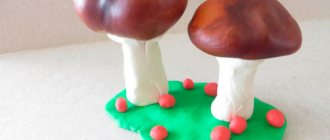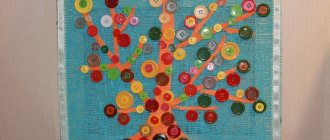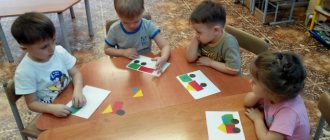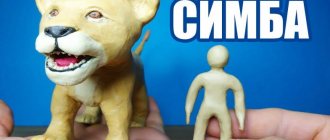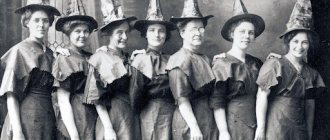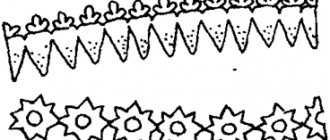Red
Costume from the author's collection of artists Karelin
Woman suit. Red color
A women's costume from the village of Twilight, Pronsky district, Ryazan province, and a peasant woman's costume from the village of Vetchany, Kasimovsky district. The end of the 19th - the beginning of the 20th century. Ryazan Historical and Architectural Museum-Reserve
This color was preferred in clothing by both peasants and boyars. The color of fire and sun, a symbol of power and fertility. Up to 33 shades of red can be seen in traditional Russian costumes. Each shade had its own name: meat, worm, red, crimson, bloody, red or red.
Nice clothes are a letter of recommendation
Lace Museum
House of Yelets Lace
Scarves and shawls in Russian folk costume
Moscow Historical and Ethnographic Theater
Folklore and ethnographic theater "Kresen"
The age of its owner could be determined by the clothes. Young girls dressed most flamboyantly before the birth of a child. The costumes of children and older people were distinguished by a modest palette.
The women's costume was replete with patterns. Images of people, animals, birds, plants and geometric shapes were woven into the ornament. Sun signs, circles, crosses, rhombic figures, deer, and birds predominated.
NOD "Russian folk sundress"
Summary of an open lesson on artistic creativity using children's design technology:
“Russian folk sundress” (senior group).
Target:
introduce children to Russian folk costume.
Tasks:
— To develop in children the desire to draw a pattern, arranging it rhythmically, to combine colors beautifully, to place the pattern on a given shape, to develop visual attention, to teach how to draw a pattern.
— Continue to develop respect for the traditions of the Russian people, introduce children to the history of Russian clothing, the peculiarities of the appearance of Russian folk costume.
— Continue to introduce ornaments in Russian folk costume.
— Practice the technique of working with a brush: the tip of the bristles, cotton swabs.
— Form aesthetic taste, develop creative imagination.
- Foster love and respect for your homeland.
Preliminary work:
1. Examination of illustrations “Russian folk costume”;
2.N NOD “Russian folk costume”;
3. Conversations on the topic “Clothes of our ancestors.”
4. Didactic game “Dress the doll in Russian folk costume.”
Material and equipment:
contours of the image of a sundress, presentation “Russian folk costume”, brushes, cotton swabs, gouache, rags, samples of embroidery patterns of sundresses, a doll in a Russian folk costume.
NNOD move:
Educator:
Educator: - Guys, let's smile at our friends, all the guests, give everyone the warmth of our smiles and hearts, so that everyone can feel joyful, bright, and comfortable here.
Educator
: Guys, I came to the nursery today and they gave me this. (there is also an address written on it) What is this?
Children's answers: (chest).
Educator: That's right guys, this is a chest in which clothes used to be stored. Let's see what's there. Open the chest, see the letter here.
Educator
: People used to dress differently than we do now.
Dear Guys ! Russian beauties write to you. We wanted to go to the fair, where, according to tradition, girls wear the most elegant, beautiful clothes. And when we took out our sundresses we saw that all the patterns on them had disappeared. Guys, we ask you to help us get to the fair. We will be very grateful to you. Guys, we will help Russian beauties get to the fair.
Children's answers.
(yes we will help)
Educator
: How can we help, return the patterns?
Children's answers
(Draw, cut and paste, embroider, sculpt from plasticine.)
Educator:
Guys, do you think girls used to dress the same way as they do now or differently?
Children's answers:
in another way, their clothes were different and they decorated their clothes with other patterns.
Educator
:I want to show you how Russian beauties used to dress. (presentation) The clothes were loose, long and unusually beautiful. It was sewn from linen fabric.
Class notes
| Author's full name | Title of the abstract |
| Klyuy A. | “Doll in national costume” Educational objectives : to introduce children to Russian folk costume, as well as costumes from other countries; consolidate the ability to depict a human figure. Developmental tasks : consolidate the ability to draw with watercolors, first marking the outline with a simple pencil. Educational objectives : to cultivate interest in the national clothes of Russia and other countries. Integration of educational areas : “Artistic creativity”, “Cognition”, “Communication”, “Socialization”, “Health”. Demonstration material: paper dolls in national costumes, a doll in a traditional Russian sundress and kokoshnik. Handouts: sheets of white paper according to the number of children, watercolor paints, sippy cups, brushes, coasters, napkins. Progress of the lesson: At the beginning of the lesson, the teacher informs the children that they live in the largest country. But besides it, there are many other countries in the world. And each has its own culture, traditions and national clothes. The teacher demonstrates paper dolls in national costumes and talks about each of them. The doll Katya comes to visit the children, dressed in Russian folk costume - an elegant silk sundress, belted with a narrow belt, and a kokoshnik. The sundress is embroidered with patterns, and the kokoshnik is decorated with gold embroidery, pearls and beads. The doll's hair is braided and decorated with a ribbon. The teacher invites the children to draw a Katya doll in her beautiful outfit. |
| Yuzhakova O.N. | “How the girl wore a red sundress” The lesson begins with the teacher and the children viewing an exhibition dedicated to Russian folk costume. To the accompaniment of quiet music, children listen to the teacher's story about the history of Russian dress. Pictures are shown depicting a shirt, a poneva (skirt), an apron, a shushun (outerwear for the cold season), a wreath, a headband, jewelry made of beads, amber, and pearls. The teacher dwells in more detail on such a piece of clothing as the Russian sundress. At first, only rich ladies wore it, and then Tsarina Catherine II allowed all classes to wear it - it became popular among peasant women and merchants' wives and daughters. An apron was usually put on top of the sundress, and a soul warmer was put on the shoulders. On their feet, peasants wore bast shoes, which were woven from bast or birch bark. By the way, in addition to them, people also wore leather shoes and felt boots in winter. The teacher also briefly talks about Russian folk clothing for men. A round dance game “Wreath” (to a Russian folk composition) is organized. Children are offered a game task - to weave a wreath from ribbons. Productive activity - the guys draw dolls Manya and Vanya, dressed in Russian costume. |
| Nikitina L. | "Doll in Russian national costume" At the beginning of the lesson, the teacher recites the lines of M. Shakhanov:
The song “I See Wonderful Freedom” plays. Conversation based on its content: what is the song about, what is the name of our native country, what is its size. The teacher asks the children who our ancestors are and from what sources we can learn about their lives. Children are invited to visit the museum - they are invited to the Fairy Tale Hall - they approach the stand with illustrations of Russian folk tales. The teacher pays attention to how the women in the pictures are dressed, where the clothes are casual and where they are festive. Physical education is conducted (accompanied by a musical composition).
Next, the children go to the Puppet Hall to look at their outfits and patterns. The teacher talks about the symbolism of flowers. From the magic chest the teacher takes out silhouettes of dolls in Russian costume. They gathered for the holiday, and the children’s task was to decorate sundresses and kokoshniks using geometric patterns. Children draw to Russian folk music. |
| Bublik L. | “Doll in national costume” (Chinese) During the lesson, children get acquainted with the friendly country of China, learn about its geographical location (large area, washed by several seas), culture, and look at the women's national costume. A Chinese doll comes to visit the children and greets them in Chinese. Her name is Jia, which means “beautiful” in Chinese. Preschoolers examine her national costume: trousers made of silk fabric, over which is worn a long wrap dress with wide sleeves (also made of silk). The Chinese outfit is embroidered with colorful patterns: flowers and butterflies, which have a symbolic meaning. Finger gymnastics “Friendship” is carried out:
Independent productive activity of children - to the accompaniment of Chinese music, they draw a Chinese doll in her national costume, and come up with their own pattern for fabric. |

